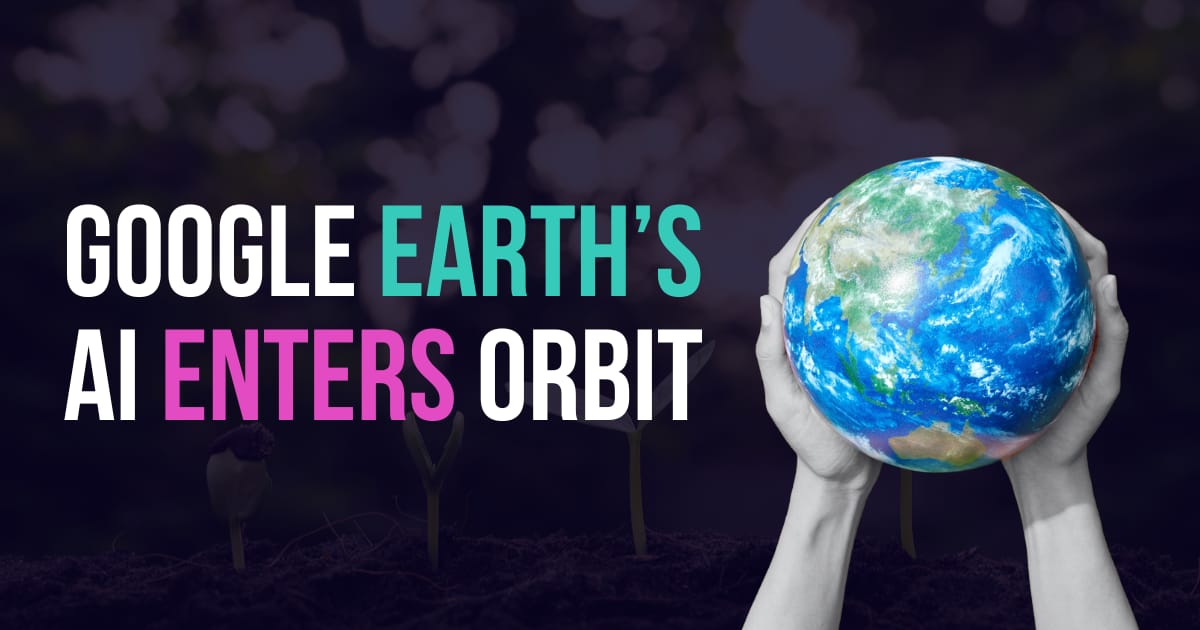- Enterprise AI Daily
- Posts
- Google Earth AI Goes Enterprise While JPMorgan Saves 4 Hours Per Employee
Google Earth AI Goes Enterprise While JPMorgan Saves 4 Hours Per Employee
Enterprise AI expands from office productivity to planetary analysis as tech giants race to automate everything
Happy Friday! Today’s briefing is full of AI playing the long game and the short hustle. Google Earth’s newest AI integrations are turning satellites into sustainability scouts. JPMorgan’s LLMs are saving employees four hours per week. And Microsoft copy-pasted OpenAI’s homework two days later. Remember when AI was helping us write better emails? Those were simpler times. Let’s unpack.
The corporate tax software guide you actually need
Discover tax software that clears your desk and your mind. This guide helps you find a solution that simplifies reporting, reduces risk, and gives you more time to focus on what really matters.

Enterprise AI Group
When Google Earth Gets an AI Brain
Google's rolling out significant updates to Google Earth AI, its AI-powered platform for monitoring the planet, bringing geospatial models that help tackle critical infrastructure and environmental challenges. This is a planetary-scale data engine now trained to help governments, scientists, and even enterprises make sense of climate risk, resource allocation, and sustainability initiatives.
The headline feature is Geospatial Reasoning, a framework powered by Gemini that automatically connects different Earth AI models, like weather forecasts, population maps and satellite imagery, to answer complex questions. Instead of just seeing where a storm might hit, it can identify vulnerable communities and at-risk infrastructure simultaneously. This offers some exciting opportunities for enterprise teams.
First, the integration options are expanding. Earth AI Imagery, Population and Environment models are becoming directly available to Trusted Testers on Google Cloud. This means businesses can combine their proprietary data with Google's models, i.e., supply chain vulnerability analysis meets real-time environmental monitoring.
Second, the use cases are already proving valuable.
The World Health Organization Regional Office for Africa is using Earth AI's Population and Environment models to understand and predict which areas in the Democratic Republic of Congo are at risk for cholera outbreaks.
Insurance broker McGill and Partners is getting hurricane prediction insights that help them pay claims faster.
For Google Earth Professional users, new Gemini capabilities let analysts quickly find objects and discover patterns from satellite imagery just by asking questions. Water companies can spot dried riverbeds to predict dust storms. Health departments can identify algae blooms threatening water supplies.
The enterprise implications are clear: environmental risk assessment is democratizing. What once required teams of GIS specialists and weeks of analysis can now happen in minutes. For companies with physical infrastructure, supply chains crossing climate-vulnerable regions, or ESG reporting requirements, this could offer game changing resources.
Want to get the most out of ChatGPT?
ChatGPT is a superpower if you know how to use it correctly.
Discover how HubSpot's guide to AI can elevate both your productivity and creativity to get more things done.
Learn to automate tasks, enhance decision-making, and foster innovation with the power of AI.

Enterprise AI Group // Created with Midjourney
News Roundup
JPMorgan’s internal LLM suite is saving 4 hours per employee, per week.
Over 200 use cases now live, from automating compliance reports to handling client communications. Estimated ROI is $1.5 billion. JPMorgan isn’t playing with pilots, it’s in full deployment mode.
Read more →Microsoft launches an AI browser 48 hours after OpenAI’s Atlas.
We’re in the browser wars, AI edition. Microsoft’s tool mimics Atlas almost feature-for-feature: AI-enhanced search, tab summarization, even whisper-style voice commands. First-mover advantage is getting shorter by the day.
Read more →Meta replaces human reviewers with AI for FTC privacy oversight.
Meta is automating FTC-mandated privacy review with AI instead of people. The company claims it's faster, cheaper, and just as accurate. Cue regulatory questions and some raised eyebrows.
Read more →
TL;DR:
Google Earth Engine’s AI tools are now powerful enough to model climate risk, wildfires, and carbon emissions, and it’s open to more orgs.
JPMorgan’s in-house LLMs are saving serious time and money across departments.
Microsoft’s new AI browser looks a lot like OpenAI’s, because it basically is
Meta is using AI to fulfill FTC privacy obligations—regulators, start your engines
“Multimodal monitoring” = climate AI’s new favorite buzzword. Sprinkle it into your next ESG deck and thank us later.
Sustainability, productivity, compliance, and copycat browsers, all in one day.
That’s enterprise AI in 2025: fast, wide, and increasingly automated in places you never thought you could automate.
Stay sharp,
Cat Valverde
Founder, Enterprise AI Solutions
Navigating Tomorrow’s Tech Landscape Together

